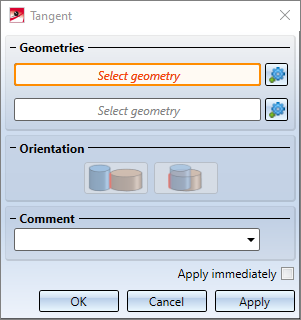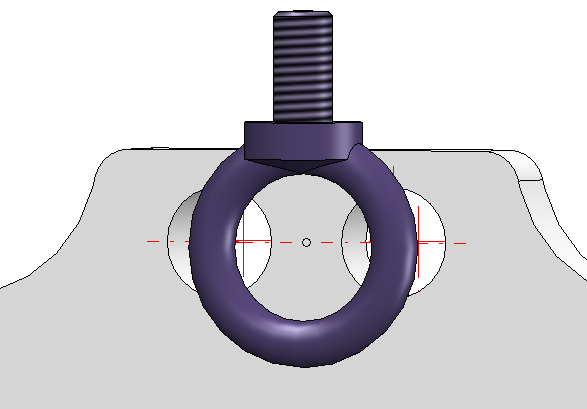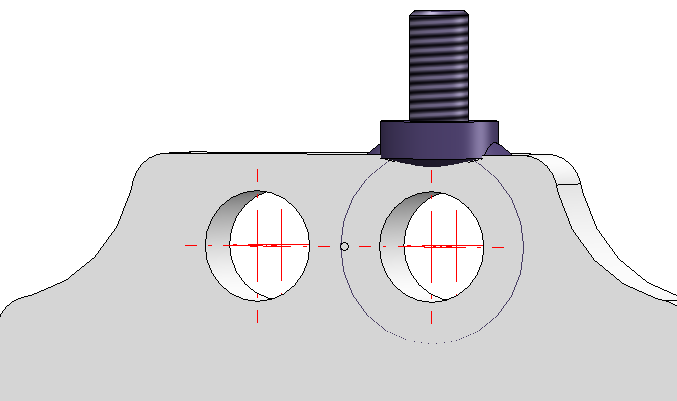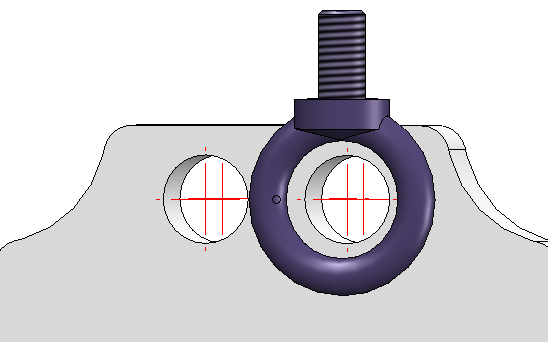Tangent
3-D Standard > HCM > Coinc..  > Tangent
> Tangent 
With the Tangent constraint, you can make any curved geometry join any other curved geometry, a straight line or a plane.
Also bear in mind again here that a cylinder is regarded as unbounded. This means that a line, for example, does not necessarily have to lie between the two top surfaces of the cylinder in order to lie tangentially to the cylinder.

Proceed as follows:
Identify as Geometries the two geometry elements, one after the other.
The other control elements are described in the topic Dimensional and Positional Constraints.
The HCM will try to set the side of the part you have clicked to tangency for cylinders, spheres, cones and tori.
Example:

The torus of the eyebolt should be tangential to the plate. If, when creating the tangency constraint, the part of the screw ring that is at the front in the view shown above is clicked, it will be placed tangential to the plate. This places the screw behind the plate:

If, on the other hand, you select the "back" of the torus, it is set tangentially and the screw comes to rest in front of the plate:

Alternatively, you can change this Orientation field via the buttons ion the same-named area of the Tangent dialogue window.

